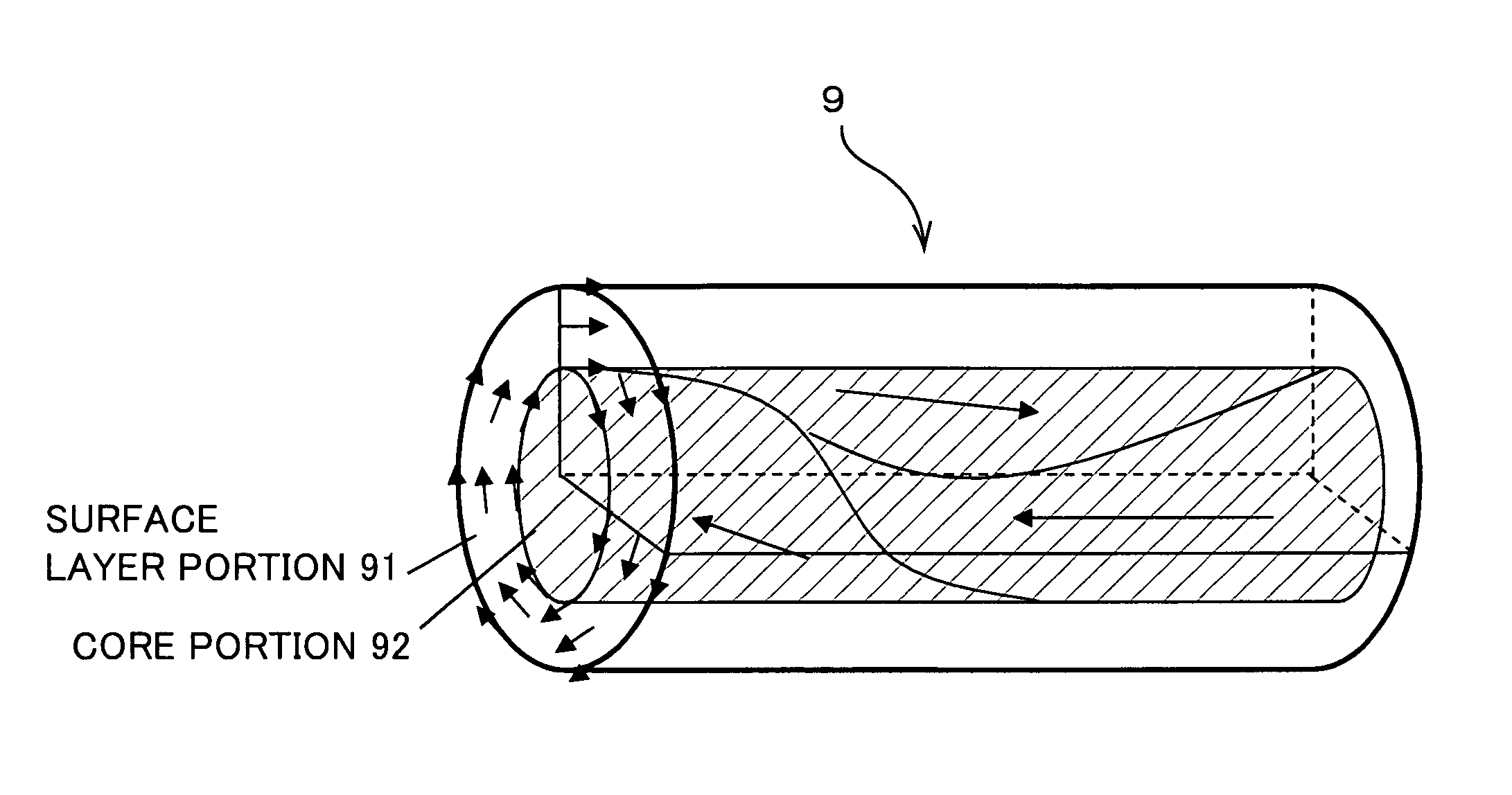Magneto-sensitive wire, magneto-impedance element and magneto-impedance sensor
a technology of magnetoimpedance element and magnetoimpedance sensor, which is applied in the field of magnetosensitive wire, can solve the problems of poor hysteresis characteristics of conventional mi sensors, and achieve the effect of improving linearity of output voltage characteristics and good hysteresis characteristics
- Summary
- Abstract
- Description
- Claims
- Application Information
AI Technical Summary
Benefits of technology
Problems solved by technology
Method used
Image
Examples
Embodiment Construction
[0063]Embodiments of the present invention will be described in comparison with a conventional example, when appropriate. It should be noted that the present invention is not limited to the following examples.
>
(1) Magneto-Sensitive Wire
[0064]An amorphous wire of 11.6 μm in diameter having an alloy composition of Co71.2Fe4.8Si11.8B12.2 (at %) and produced by an improved Taylor method was used as a specimen material of a magneto-sensitive wire according to an example of the present invention. This amorphous wire serving as a specimen material was subjected to thermal treatment for 7 seconds at an atmosphere temperature of 520 deg. C. with a tension of 200 MPa applied (Example 1).
[0065]Also prepared, as a conventional example, was an amorphous wire having a spin structure in which spins are aligned in a certain circumferential direction in a surface layer portion like the surface layer portion 91 in FIG. 6, and a multi-magnetic domain structure in an inner portion (produced by UNITIKA ...
PUM
 Login to View More
Login to View More Abstract
Description
Claims
Application Information
 Login to View More
Login to View More - R&D
- Intellectual Property
- Life Sciences
- Materials
- Tech Scout
- Unparalleled Data Quality
- Higher Quality Content
- 60% Fewer Hallucinations
Browse by: Latest US Patents, China's latest patents, Technical Efficacy Thesaurus, Application Domain, Technology Topic, Popular Technical Reports.
© 2025 PatSnap. All rights reserved.Legal|Privacy policy|Modern Slavery Act Transparency Statement|Sitemap|About US| Contact US: help@patsnap.com



